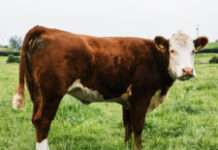Bird watchers are flocking to southwest Kansas after the appearance there of a Ross’s gull, a rare species generally found only in Siberia, Greenland, Canada and northern Alaska.
“This is a really big deal to birders, not only to Kansans but to birders across the United States,” said Carol Morgan, president of the Topeka Audubon Society.
At least 100 people had journeyed to Ford County to enjoy a “once-in-a-lifetime opportunity” to see the lone Ross’s gull, which was first spotted Friday in a rural area about 20 miles south of Dodge City, Morgan said.
The bird remained in that area Tuesday morning, she said.
“Confirmed by experts, this small, pale gray gull has caused a stampede of birders to the location for the chance to see a mega-rarity,” Morgan said.
Bird expert says this is one of 11 reported sightings ever in lower 48 states
Morgan said she learned online Friday from fellow bird watchers that the Ross’s gull had been spotted in Ford County. The bird’s gender is unknown, she said.
“There have been only 10 other reported sightings of Ross’s gull on eBird in the lower 48 states ever,” Morgan said. “Most of those sightings were on the northern east or west coasts.”
Morgan said she and two friends drove nearly 300 miles Saturday to the area involved, where they spent about 30 minutes watching the Ross’s gull fly around and scavenge in the area of a playa, which is a “seasonal wet spot” that provides a good habitat for migrating birds.
Morgan said of the experience, “It was fantastic.”
Gull’s appearance in Kansas as rare as a ‘three-peat Super Bowl victory’
Chuck Otte, a past president of the Kansas Ornithological Society who lives near Milford in Geary County, said he drove out to see the Ross’s gull Sunday.
Otte has been watching birds since he was 4 and is about to turn 69, he said.
A Kansas City Chiefs fan, he said he found it difficult to explain to people “what a rarity” the bird’s appearance here is.
“It’s the bird watcher’s equivalent of a three-peat Super Bowl victory,” he said.
What is the Ross’s gull?
The global population of the Ross’s gull has been estimated at less than 10,000, according to the website of the National Audubon Society.
The bird is named after the British explorer James Clark Ross. Its breeding grounds were first discovered in 1905 in northeast Siberia.
Ross’s gulls are generally 11.4 to 12.2 inches long, weigh 4.9 to 8.8 ounces and have a wingspan of 35.4 to 39.4 inches, according to www.allaboutbirds.org.
During its breeding season, the Ross’s gull has a remarkable appearance, with a dark collar circling its head, Morgan said.
“It is pale gray and brilliant white, sometimes with a pink wash on the breast and belly, a small black beak, bright orange legs and a wedge-shaped tail,” she said. “In non-breeding season (now), the circle around the head is almost invisible, with only a dark ear spot remaining, and the legs are dull orange.”
The species is protected in the U.S. by the Migratory Bird Treaty Act.
Ross’s gulls feed mostly on insects during the breeding season and mostly on small fish and marine invertebrates during migration and in the winter, Morgan said.
“It may also feed on dead animals, which is what it is doing at the playa in Ford County,” she said. “I observed it consuming parts of a dead snow goose that was lying on ice.”
Topeka Audubon Society president: ‘This is a birder’s dream’
Morgan said she and her friends began their journey to southwest Kansas about 5 a.m. Saturday, arriving about 9:30 a.m.
“It was a long drive, but it was worth it,” she said.
Morgan said she and her friends watched the rare bird accompanied by about a dozen other people, including one from Texas.
The Ross’s gull was often within about 40 feet of the dirt road from which the birders watched using binoculars and telescopes on tripods, though it sometimes flew out to areas that were more distant, Morgan said.
Ross’s gull is ‘a delicate little gull’
Otte said he is accustomed, when showing up at a place where a bird from a rare species has been sighted, to having to scan through hundreds of other birds before finding the one rare bird.
That was not the case Sunday, he said.
“It was the only gull there,” Otte said, adding that none of the other types of gulls he expected to see in the area were present.
The Ross’s gull is “a delicate little gull, one of our small gulls, and because of its rarity that makes it even more striking,” Otte said.
Gull’s presence brought tourism dollars to southwest Kansas
Bird watchers from Oklahoma, New Mexico, Colorado, Nebraska, Missouri, Wisconsin and South Carolina have also traveled to Ford County to see the Ross’s gull, Morgan said.
“This is a birder’s dream, to be able to see an incredibly rare species somewhere within driving distance, or within flying distance if you’re coming from someplace like South Carolina,” she said.
She said she was pleased the presence of the rare bird was generating tourism dollars for the state of Kansas, with visitors paying “considerable” amounts to cover costs that include food, gasoline and lodging.
As reported in the Topeka Capital Journal




